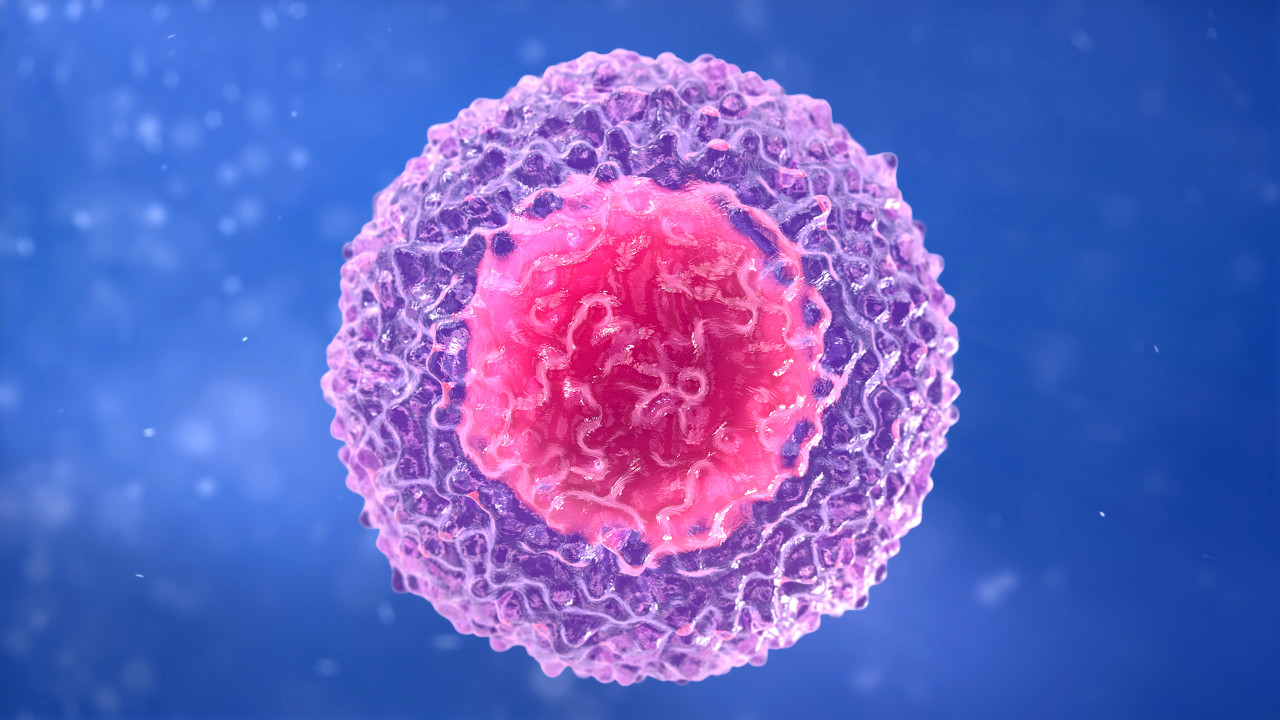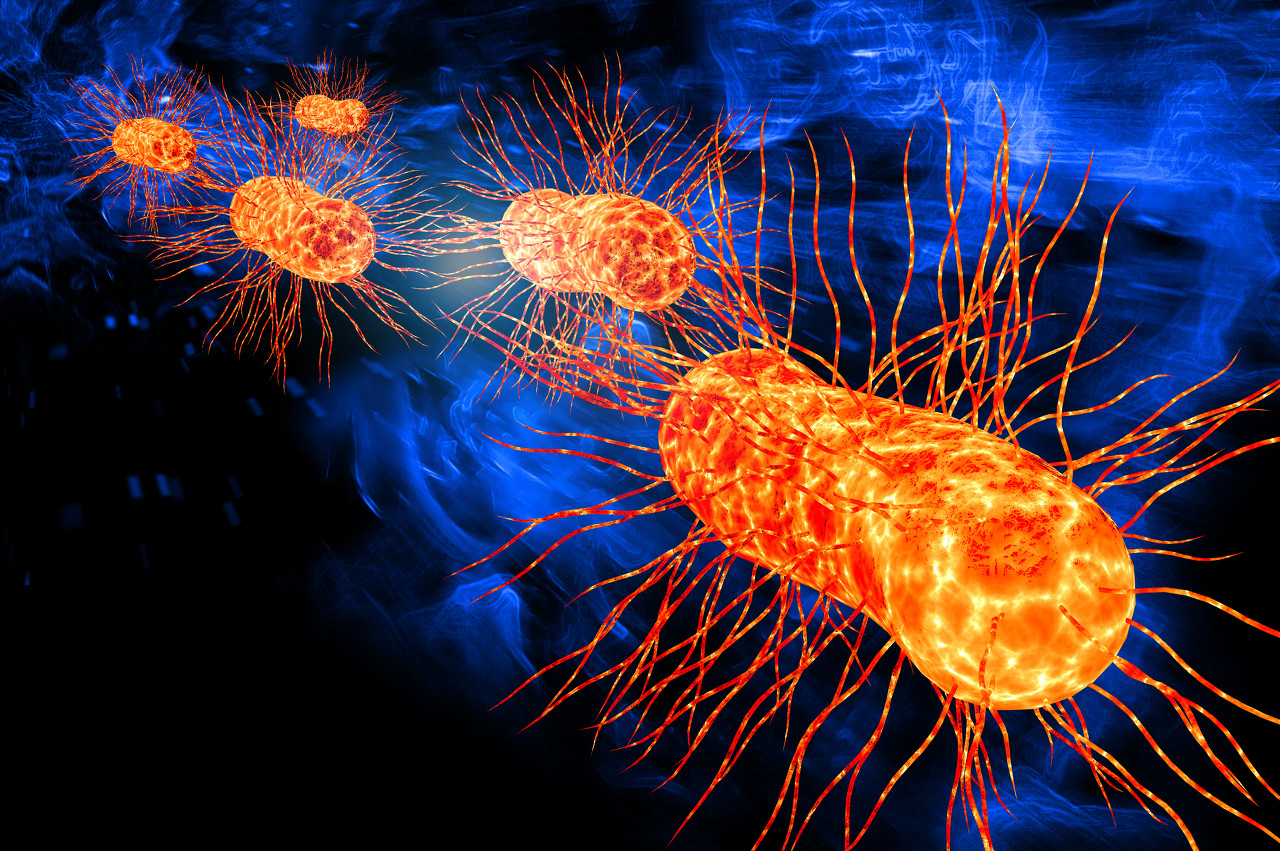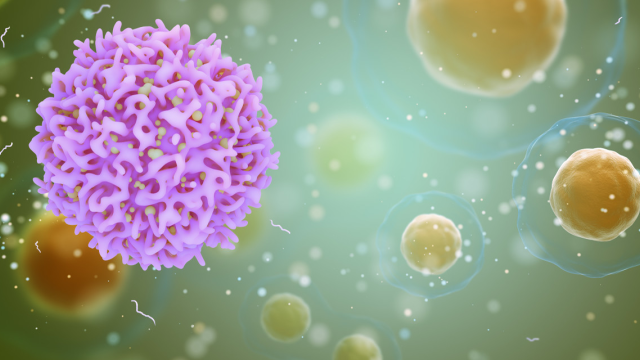
编者按:
人体微生物组研究领域已经逐渐从对微生物进行物种鉴定分类,过渡到对微生物组影响人类健康的分子机制进行剖析。生命早期的微生物组的发展,可以影响人体免疫功能的发育。因此,通过不同方式获得的微生物及其代谢物,有可能对人体健康产生终生影响。
今天,我们特别编译了发表在 Nature Communication 杂志上题为“The human microbiome in the 21st century”的文章,该文讲述了人体微生物组在宿主免疫、生理方面的情况,以及早期生命时期对健康的作用。希望本文能够为相关的产业人士和诸位读者带来一些启发与帮助。
我们最近的认知是,人体支持着微生物的多样性,这使得我们对人体这种超级生命体(人体和微生物的集合被称为超级生命体)中的功能基因的扩增有了更广阔的认识。
在过去的几年中,人体微生物组研究领域已从对这些微生物种类多样性的剖析,逐渐过渡到把它们视为一个动态的辅助功能系统,它们可以跨时空梯度,实现与宿主生理发育和衰退协同发展1~5。
近几个世纪以来,我们逐渐观察到微生物是如何影响人体健康的,微生物和宿主细胞之间的相互作用又是如何控制着传染病的。
越来越明显的一点是,微生物组功能紊乱与一系列广泛的疾病有关,比如慢性炎症6,7、代谢疾病8~10、神经紊乱11,12和癌症13。这种微生物组的紊乱可能发生在局部的疾病部位,也可能发生在距离病灶遥远的粘膜部位或器官系统上,从而刺激宿主的代谢和免疫发生改变。

1885 年,Louis Pasteur 推测,因为动物与微生物有着绵延的共同进化史14,所以定菌动物或无菌动物将无法存活。
然而,事实上无菌动物依然可以饲养,而且使用这种动物的研究已经有助于说明微生物在哺乳动物发育和健康中的关键作用。无菌小鼠寿命较短,盲肠严重肿大15,缺乏天然抗体16,17,严重缺乏维生素 K 和 B12 15。
在遗传易感背景下产生的无菌小鼠,使研究宿主遗传学和微生物组之间的关系成为可能。例如,传统的 IL-10 缺陷小鼠会出现自发性结肠炎,但它们的无菌小鼠同胞既不会出现结肠炎,也不会出现免疫系统激活18,这表明在一个随时可能出现炎症的体系中,微生物组是疾病的触发器。
然而,给无菌小鼠重新引入缺乏的菌群,也就是进行常规化操作时(conventionalization),并不总能挽救观察到的缺陷。
在成年小鼠的常规化实验中,以前是无菌小鼠的小鼠,常规化后对病原体的敏感性反而增加了19。
与这些研究一致的是,无菌小鼠表现出异常的、持久的自然杀伤 T 细胞功能,并且在肠易激综合征和过敏性哮喘模型中,无菌小鼠的发病率升高,而上述这些问题只能通过在新生儿期,而非在成年期进行常规化来挽救20。
因此,具有年龄敏感性的微生物发展过程,似乎对免疫功能的建立和训练,以及后续的健康转归至关重要。利用无菌小鼠也为我们提供了微生物组及其产物对人类疾病有影响的证据,比如,接受患者来源的微生物组移植的受体动物具有疾病表型特征21~25。

包括饮食、抗菌素和免疫在内的大量外在和内在因素影响着人体微生物组,特别是数量最多和多样性最复杂的肠道微生物组。反过来,微生物组的生物活性产物也塑造了局部或遥远的部位的人体细胞功能26,27。
在引入特定微生物的无菌小鼠的研究中,肠道微生物组的成员被证明可以强烈地影响哺乳动物的能量采集和代谢28,29,并会产生一系列会影响生理功能的微生物特异性代谢物,其中大量代谢物会进入循环系统30。
因此,在某一部位发生的微生物活动,可能会影响到其他遥远部位的生理疾病和细胞功能。例如,氧化三甲胺(TMAO)浓度的增加与动脉硬化有关,并依赖于肠道细菌对膳食中磷脂胆碱的代谢31,32,这为饮食与肠道微生物相互作用,从而控制心血管疾病提供了第一个证据。
在生命早期,微生物组在身体各个部位同步发展,这个过程遵循生态演替的原则33,并且还能帮助宿主形成生理和免疫功能18。
事实上,在 4 日龄的人类新生儿上检测到的细菌与 120 日龄的微生物组结构相关34,这表明了初始微生物在微生物演替轨迹中的重要性。
因此,早期生命中的微生物组可以帮助我们了解疾病的起源,并帮助我们发现那些处于风险中的人群,并在早期进行干预,以防止疾病的发展。
例如,婴儿期的肠道微生物组特征和代谢功能障碍,是儿童过敏和哮喘发展的高风险特征7。
此外,在哮喘高危婴儿的粪便中发现的浓度升高的特定微生物衍生代谢物,促进了特有的免疫功能障碍关键特征的发展7,35。
例如,在高危婴儿的粪便中高浓度的氧脂素 12,13-DiHOME 会在初级免疫细胞和小鼠模型中诱发过敏性炎症35。在高危婴儿的粪便中富集了编码环氧化物水解酶的基因的细菌,而这些细菌可以催化生成 12,13-DiHOME。将这些细菌移植入小鼠肠道微生物组,足以增加 12,13-DiHOME 的循环浓度,并加重小鼠呼吸道的过敏性炎症35。
此外,在一月龄婴儿粪便样本中,如果氧脂素浓度或细菌环氧化物水解酶基因的拷贝数增加,会显著增加童年期过敏和/或哮喘发展的风险35,这强调了生命早期微生物及其代谢产物在疾病发展的作用。
最近,少量的直接(电子显微镜)和间接(分子)证据表明,在妊娠期期间,胚胎肠道中存在少量但具有活性的细菌,并且,研究还发现,仅在存在妊娠激素的情况下分离的胎儿菌株,具有调节胎儿 T 细胞的炎性能力36。
另外,已有研究表明,早在人类怀孕的中期,胎儿中那些经过抗原训练的免疫细胞群已经具有了对微生物刺激的反应能力37~40,并在产后持续拥有这种能力。
通过垂直转移、水平转移和从环境中获得的早期生命的微生物及其代谢物,影响了人体的免疫功能和生理发育,并对人体的健康产生终生影响,因此,对控制这一过程的相互作用进一步理解,显得至关重要。

从生态学角度讲,低丰度的物种和菌株是遗传和功能多样性的重要储存库41。而更广泛地了解在生命早期微生物组成熟过程中微生物的主要和辅助功能,以及成熟微生物组在扰动后的重建,是理解微生物组功能、稳定性和弹性特征的关键。
微生物-微生物和微生物-宿主的相互作用,也对这一理解至关重要,它们在营养底物可用性的背景下,控制竞争定殖和生态位特异性42,43。
与野生小鼠44~46相比,无菌和实验室小鼠的免疫不成熟。相似地,居住在农场的人类表现出更复杂的微生物功能多样性,并且对慢性炎症性疾病的易感性较低47,48。
传统的狩猎-采集人群拥有动态的微生物谱系,这些微生物谱系表现出季节性的变化,并且这些微生物中还包括了大量在城市居民中灭绝的微生物物种49,而生活方式的变化(包括定居)导致游牧人口中疾病防护微生物的枯竭50。
因此,因为环境的暴露而造成的灵活的和反应灵敏的微生物的逐渐丧失,可能是改变生活方式和现代化的代价。基于此,微生物生态系统管理,包括精准营养和合理的微生物补充,以促进或恢复被西方生活方式和城市暴露侵蚀的微生物功能网络,可能变得越来越重要。
随着我们进入人体微生物组研究的下一个十年,这个领域的前进势头需要在空间、时间和环境梯度上进一步了解微生物的功能、生产力以及与人类宿主的相互作用。
将平行高分辨率细胞综合分析方法应用于纵向采集的样本中,以获取微生物组的功能、生产力、宿主反应和人类学测量结果,将有助于更广泛地了解我们与微生物的共同进化,以及形成微生物-微生物-宿主相互作用的力量。
除了广度之外,这类研究还需要深度:从生态系统层面到塑造人类生物学的细胞和分子网络,都需要进行跨尺度的综合探究,以促进揭示这一领域进行精确诊断和干预所需的机制性见解。
确定如何在不同的发育阶段、宿主遗传背景和环境暴露条件下,成功地恢复枯竭的微生物功能,并合理和可持续地重新设计微生物组,是人体微生物组研究的下一个前沿。
参考文献:
(滑动下方文章查看)
1. Stewart, C. J. et al. Temporal development of the gut microbiome in early childhood from the TEDDY study. Nature 562, 583–588 (2018).
2. Langille, M. G. et al. Microbial shifts in the aging mouse gut. Microbiome 2, 50 (2014).
3. Claesson, M. J. et al. Gut microbiota composition correlates with diet and health in the elderly. Nature 488, 178–184 (2012).
4. Cheng, J. et al. Discordant temporal development of bacterial phyla and the emergence of core in the fecal microbiota of young children. ISME J. 10, 1002–1014 (2016).
5. Hollister, E. B. et al. Structure and function of the healthy pre-adolescent pediatric gut microbiome. Microbiome 3, 36 (2015).
6. Arrieta, M.-C., Stiemsma, L. T., Amenyogbe, N., Brown, E. M. & Finlay, B. The intestinal microbiome in early life: health and disease. Front. Immunol. 5, 427 (2014).
7. Fujimura, K. E. et al. Neonatal gut microbiota associates with childhood multisensitized atopy and T cell differentiation. Nat. Med. 22, 1187–1191 (2016).
8. Turnbaugh, P. J. et al. A core gut microbiome in obese and lean twins. Nature 457, 480–484 (2009).
9. Le Chatelier, E. et al. Richness of human gut microbiome correlates with metabolic markers. Nature 500, 541–546 (2013).
10. Wang, J. et al. A metagenome-wide association study of gut microbiota in type 2 diabetes. Nature 490, 55–60 (2012).
11. Cryan, J. F., O’Riordan, K. J., Sandhu, K., Peterson, V. & Dinan, T. G. The gut microbiome in neurological disorders. Lancet Neurol. 19, 179–194 (2020).
12. Hsiao, E. Y. et al. Microbiota modulate behavioral and physiological abnormalities associated with neurodevelopmental disorders. Cell 155, 1451–1463 (2013).
13. Nejman, D. et al. The human tumor microbiome is composed of tumor type-specific intracellular bacteria. Science 368, 973–980 (2020).
14. Pasteur, L. Observations relatives à la note précédente de M. Duclaux. CR Acad. Sci. 100, 68 (1885).
15. Pleasants, J. R. Rearing germfree cesarean-born rats, mice, and rabbits through weaning. Ann. N. Y. Acad. Sci. 78, 116–126 (1959).
16. Ikari, N. S. Bactericidal antibody to Escherichia coli in germ-free mice. Nature 202, 879–881 (1964).
17. Bos, N. A., Meeuwsen, C. G., Wostmann, B. S., Pleasants, J. R. & Benner, R. The influence of exogenous antigenic stimulation on the specificity repertoire of background immunoglobulin-secreting cells of different isotypes. Cell. Immunol. 112, 371–380 (1988).
18. Sellon, R. K. et al. Resident enteric bacteria are necessary for development of spontaneous colitis and immune system activation in interleukin-10-deficient mice. Infect. Immun. 66, 5224–5231 (1998).
19. Hansen, A. K., Hansen, C. H. F., Krych, L. & Nielsen, D. S. Impact of the gut microbiota on rodent models of human disease. World J. Gastroenterol. 20, 17727–17736 (2014).
20. Olszak, T. et al. Microbial exposure during early life has persistent effects on natural killer T cell function. Science 336, 489–493 (2012).
21. Turnbaugh, P. J. et al. An obesity-associated gut microbiome with increased capacity for energy harvest. Nature 444, 1027–1031 (2006).
22. Ley, R. E., Turnbaugh, P. J., Klein, S. & Gordon, J. I. Microbial ecology: human gut microbes associated with obesity. Nature 444, 1022–1023 (2006).
23. Turnbaugh, P. J. et al. The effect of diet on the human gut microbiome: a metagenomic analysis in humanized gnotobiotic mice. Sci. Transl. Med. 1, 6ra14–6ra14 (2009).
24. Turnbaugh, P. J., Bäckhed, F., Fulton, L. & Gordon, J. I. Diet-induced obesity is linked to marked but reversible alterations in the mouse distal gut microbiome. Cell Host Microbe 3, 213–223 (2008).
25. Sharon, G. et al. Human gut microbiota from autism spectrum disorder promote behavioral symptoms in mice. Cell 177, 1600–1618.e17 (2019).
26. Scharschmidt, T. C. et al. A wave of regulatory T Cells into neonatal skin mediates tolerance to commensal microbes. Immunity 43, 1011–1021 (2015).
27. Hepworth, M. R. et al. Innate lymphoid cells regulate CD4+ T-cell responses to intestinal commensal bacteria. Nature 498, 113–117 (2013).
28. Bäckhed, F. et al. The gut microbiota as an environmental factor that regulates fat storage. Proc. Natl Acad. Sci. USA 101, 15718–15723 (2004).
29. Sonnenburg, J. L. et al. Glycan foraging in vivo by an intestine-adapted bacterial symbiont. Science (80-.) 307, 1955–1959 (2005).
30. Uchimura, Y. et al. Antibodies set boundaries limiting microbial metabolite penetration and the resultant mammalian host response. Immunity 545–559, https://doi.org/10.1016/j.immuni.2018.08.004 (2018).
31. Wang, Z. et al. Gut flora metabolism of phosphatidylcholine promotes cardiovascular disease. Nature 472, 57–63 (2011).
32. Tang, W. H. W. et al. Intestinal microbial metabolism of phosphatidylcholine and cardiovascular risk. N. Engl. J. Med 368, 1575–1584 (2013).
33. Gilbert, J. A. & Lynch, S. V. Community ecology as a framework for human microbiome research. Nat. Med. https://doi.org/10.1038/s41591-019-0464-9 (2019).
34. Eggesbø, M. et al. Development of gut microbiota in infants not exposed to medical interventions. APMIS 119, 17–35 (2011).
35. Levan, S. R. et al. Elevated faecal 12,13-diHOME concentration in neonates at high risk for asthma is produced by gut bacteria and impedes immune tolerance. Nat. Microbiol. https://doi.org/10.1038/s41564-019-0498-2 (2019).
36. Rackaityte, E. et al. Viable bacterial colonization is highly limited in the human intestine in utero. Nat. Med. 26, 599–607 (2020).
37. Stras, S. F. et al. Maturation of the human intestinal immune system occurs early in fetal development. Dev. Cell 51, 357–373.e5 (2019).
38. Halkias, J. et al. CD161 contributes to prenatal immune suppression of IFNγ- producing PLZF+ T cells. J. Clin. Invest. https://doi.org/10.1172/JCI125957 (2019).
39. Schreurs, R. R. C. E. et al. Human fetal TNF-α-cytokine-producing CD4+ effector memory T cells promote intestinal development and mediate inflammation early in life. Immunity 0, 1–15 (2019).
40. Li, N. et al. Memory CD4+ T cells are generated in the human fetal intestine. Nat. Immunol. https://doi.org/10.1038/s41590-018-0294-9 (2019).
41. Lynch, M. D. J. & Neufeld, J. D. Ecology and exploration of the rare biosphere. Nat. Rev. Microbiol. 13, 217–229 (2015).
42. Suez, J. et al. Post-antibiotic gut mucosal microbiome reconstitution is impaired by probiotics and improved by autologous FMT. Cell 174, 1406–1423.e16 (2018).
43. Zmora, N. et al. Personalized gut mucosal colonization resistance to empiric probiotics is associated with unique host and microbiome features. Cell 174, 1388–1405.e21 (2018).
44. Rosshart, S. P. et al. Wild mouse gut microbiota promotes host fitness and improves disease resistance. Cell 171, 1015–1021.e13 (2017).
45. Rosshart, S. P. et al. Laboratory mice born to wild mice have natural microbiota and model human immune responses. Science (80-.) 365, eaaw4361 (2019).
46. Beura, L. K. et al. Normalizing the environment recapitulates adult human immune traits in laboratory mice. Nature 532, 512–516 (2016).
47. Stein, M. M. et al. Innate immunity and asthma risk in amish and hutterite farm children. N. Engl. J. Med. 375, 411–421 (2016).
48. Dhakal, S. et al. Amish (rural) vs. Non-amish (urban) infant fecal microbiotas are highly diverse and their transplantation lead to differences in mucosal immune maturation in a humanized germfree piglet model. Front. Immunol. 10, 1509 (2019).
49. Smits, S. A. et al. Seasonal cycling in the gut microbiome of the Hadza hunter- gatherers of Tanzania. Science (80-.) 357, 802–806 (2017).
50. Keohane, D. M. et al. Microbiome and health implications for ethnic minorities after enforced lifestyle changes. Nat. Med. 26, 1089–1095 (2020).
原文链接:https://doi.org/10.1038/s41467-020-18983-8
作者|Elze Rackaityte, Susan V. Lynch
编译|赵婧
审校|617
编辑|笑咲


